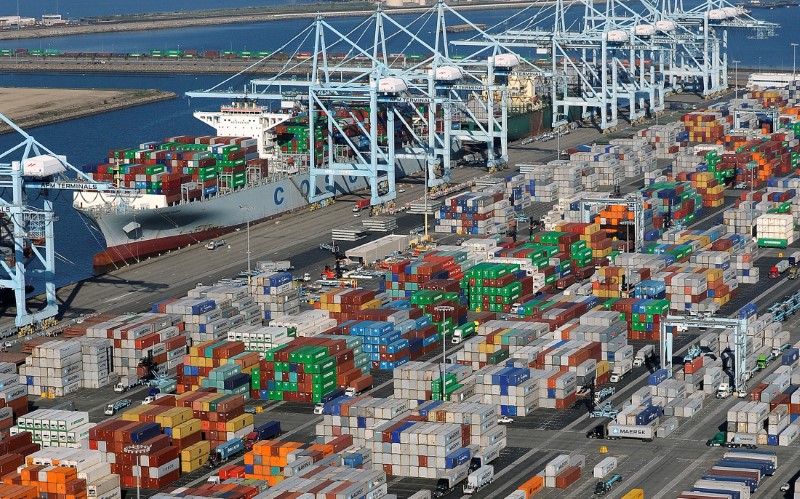By Lucia Mutikani
WASHINGTON (Reuters) - The U.S. trade deficit fell from a near two year high in February as slowing domestic demand weighed on imports and stronger global growth boosted exports of American goods.
The politically sensitive trade gap with China narrowed sharply by 26.6 percent from January to $23 billion ahead of a summit between President Donald Trump and China's Xi Jinping this week, although seasonal factors were likely behind the dramatic drop, economists said.
The Commerce Department said on Tuesday the trade deficit declined 9.6 percent to $43.6 billion, also as exports increased to their highest level in more than two years, after rising to a near two-year high of $48.2 billion in January.
"The U.S has its work cut out for it if it is going to try to alter the pattern of trade that has developed between China and U.S. companies over the last 10 to 20 years," said Chris Rupkey, chief economist at MUFG Union Bank in New York.
Economists had forecast the overall trade gap falling to $44.8 billion in February. When adjusted for inflation, the deficit decreased to $59.7 billion, with exports of goods the highest on record as an earlier drag from a strong dollar fades.
The real trade deficit was $65.1 billion in January.
Despite the decline in the real trade deficit, trade will probably be either neutral or impose a small drag on gross domestic product in the first quarter after subtracting 1.82 percentage points from fourth-quarter growth.
In addition to trade, weak consumer spending also likely constrained the economy in the first three months of the year.
The Atlanta Federal Reserve is forecasting GDP rising at a 1.2 percent rate in the first quarter, a deceleration from the 2.1 percent pace logged in the October-December period.
The dollar were little changed against a basket of currencies, as were stocks on Wall Street. Treasuries were trading lower.
ELIMINATING THE TRADE IMBALANCE
Trump's administration has ordered a study into the causes of U.S. trade deficits and a clamp-down on import duty evasion. He believes that large deficits are slowing American growth and employment.
Trump also wants to renegotiate the North American Free Trade Agreement (NAFTA).
A second report from the Commerce Department on Tuesday showed new orders for U.S.-made goods increased for a third straight month in February on growing demand for machinery and electrical equipment, suggesting the manufacturing-led recovery was broadening.
"The strength in manufacturing activity and overall job creation will result in the Federal Reserve looking through what looks likely to be a soft quarterly reading on real GDP growth," said John Ryding, chief economist at RDQ Economics in New York.In February, imports of goods and services fell 1.8 percent to $236.4 billion amid declines in imports of cell phones and motor vehicles. Imports had risen in recent months, in part on higher oil prices.
Some of the decline in imports in February likely reflects slower consumer spending. Data on Friday showed real consumer spending decreased for a second straight month in February, the first back-to-back monthly decline since April 2009.
Still, food imports hit a record high in February and imports of capital goods were the highest in nearly two years.
Exports of goods and services increased 0.2 percent to $192.9 billion, the highest level since December 2014 as shipments of automobiles and parts hit their highest level since July 2014. Exports of industrial supplies and materials were the highest since December 2015.

The nation exported more goods to Germany, the United Kingdom, Canada, Japan and Italy. However, exports to China fell 2.7 percent and Mexico saw a 7.1 percent drop in goods sourced from the United States.